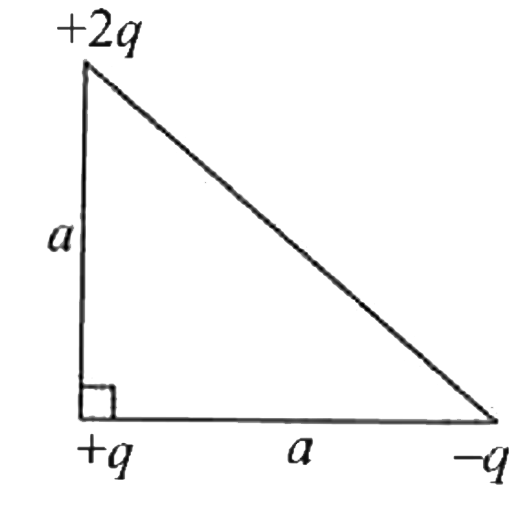Let two non-collinear unit vector ˆa a n d ˆb form an acute angle. A point P moves so that at any time t, the position vector OP(whereO is the origin) is given by ˆacost+ˆbsint.WhenP is farthest from origin O, let M be the length of OPandˆu be the unit vector along OP. Then (a)ˆu=ˆa+ˆb∣∣ˆa+ˆb∣∣andM=(1+ˆa.ˆb)1/2 (b) ˆu=ˆa−ˆb∣∣ˆa−ˆb∣∣andM=(1+ˆa.^)1/2 (c) ˆu=ˆa+ˆb∣∣ˆa+ˆb∣∣andM=(1+2ˆa.ˆb)1/2 (d) ˆu=ˆa−ˆb∣∣ˆa−ˆb∣∣andM=(1+2ˆa.ˆb)1/2Solution in Bengali
Step by step video & image solution for Let two non-collinear unit vector hat a a n d hat b form an acute angle. A point P moves so that at any time t , the position vector O P(w h e r eO is the origin) is given by hat acost+ hat bsintdotW h e nP is farthest from origin O , let M be the length of O Pa n d hat u be the unit vector along O Pdot Then (a) hat u=( hat a+ hat b)/(| hat a+ hat b|)a n dM=(1+ hat adot hat b)^(1//2) (b) hat u=( hat a- hat b)/(| hat a- hat b|)a n dM=(1+ hat adot hat )^(1//2) (c) hat u=( hat a+ hat b)/(| hat a+ hat b|)a n dM=(1+2 hat adot hat b)^(1//2) (d) hat u=( hat a- hat b)/(| hat a- hat b|)a n dM=(1+2 hat adot hat b)^(1//2) by Maths experts to help you in doubts & scoring excellent marks in Class 12 exams.
Updated on:21/07/2023Topper's Solved these Questions
- TRIGONOMETRIC RATIOS FOR COMPOUND, MULTIPLE, SUB-MULTIPLE ANGLES, AND TRANSFORMATION FORMULAS BOOK - CENGAGE PUBLICATIONCHAPTER - TRIGONOMETRIC RATIOS FOR COMPOUND, MULTIPLE, SUB-MULTIPLE ANGLES, AND TRANSFORMATION FORMULAS EXERCISE - Multiple Correct Answers Type
6 Videos
- VECTORS TRIPLE PRODUCTS, RECIPROCAL SYSTEM OF VECTORSBOOK - CENGAGE PUBLICATIONCHAPTER - VECTORS TRIPLE PRODUCTS, RECIPROCAL SYSTEM OF VECTORSEXERCISE - DPP 2.4
20 Videos
Similar Questions
If sec x + tan x =22/7 , find the value of tanx/2
View Solution→a=2→i+→j+→k, →b=b1ˆi+b2ˆj+b3ˆk,
→a×→b=5ˆi+2ˆj−12ˆk,→a.→b=11, then b1+b2+b3=
View SolutionThe position vectors of the points PandQ with respect to the origin O are →a=ˆi+3ˆj−2ˆk and →b=3ˆi−ˆj−2ˆk, respectively. If M is a point on PQ, such that OM is the bisector of ∠POQ, then →OM is a. 2(ˆi−ˆj+ˆk) b. 2ˆi+ˆj−2ˆk c. 2(−ˆi+ˆj−ˆk) d. 2(ˆi+ˆj+ˆk)
View SolutionLet two non-collinear unit vector ˆa a n d ˆb form an acute angle. A point P moves so that at any time t, the position vector OP(whereO is the origin) is given by ˆacost+ˆbsint.WhenP is farthest from origin O, let M be the length of OPandˆu be the unit vector along OP. Then (a)ˆu=ˆa+ˆb∣∣ˆa+ˆb∣∣andM=(1+ˆa.ˆb)1/2 (b) ˆu=ˆa−ˆb∣∣ˆa−ˆb∣∣andM=(1+ˆa.^)1/2 (c) ˆu=ˆa+ˆb∣∣ˆa+ˆb∣∣andM=(1+2ˆa.ˆb)1/2 (d) ˆu=ˆa−ˆb∣∣ˆa−ˆb∣∣andM=(1+2ˆa.ˆb)1/2
View SolutionThree particles , each of mass m, are placed at the vertices of a right angled triangle as shown in figure. The position vector of the center of mass of the system is (O is the origin and hat(i), hat(j), hat(k) are unit vectors)
View Solutionमाना दो असंरेखीय इकाई दिशा ˆa और ˆb एक न्यूनकोण बनाते हैं एक बिंदु P इस प्रकार गतिमान है कि किसी समय t पर स्थिति सदिश −−→OP (जहां O मूल बिंदु है) ˆacost+ˆbsint द्वारा दिया जाता है। माना जब P मूल बिंदु O से अधिकतम दूरी पर है एवं −−→OP की लम्बाई M तथा ˆu,−−→OP के अनुदिश इकाई सदिश हे तब
View SolutionThe position vectors of the vertices A,B,andC of a triangle are ˆi+ˆj,ˆj+ˆkandˆi+ˆk , respectively. Find the unite vector ˆr lying in the plane of ABC and perpendicular to IA,whereI is the incentre of the triangle.
View SolutionThe position vectors of the points PandQ with respect to the origin O are →a=ˆi+3ˆj−2ˆk and →b=3ˆi−ˆj−2ˆk, respectively. If M is a point on PQ, such that OM is the bisector of ∠POQ, then →OM is a. 2(ˆi−ˆj+ˆk) b. 2ˆi+ˆj−2ˆk c. 2(−ˆi+ˆj−ˆk) d. 2(ˆi+ˆj+ˆk)
View SolutionThe position vectors of points AandB w.r.t. the origin are →a=ˆi+3ˆj−2ˆk, →b=3ˆi+ˆj−2ˆk respectively. Determine vector →OP which bisects angle AOB, where P is a point on AB.
View SolutionGiven unit vectors ˆm,ˆnandˆp such that angel between ˆmandˆn is α and angle between ˆpand(ˆm׈n) is also α,then[ˆnˆpˆm]=
View SolutionThe angles of triangle, two of whose sides are represented by vectors √3(→a×→b)and →b−(ˆa.→b)ˆa,where→b is a non zero vector and ˆa is unit vector in the direction of →a, are
View SolutionLet two non-collinear unit vector ˆa a n d ˆb form an acute angle. A point P moves so that at any time t, the position vector OP(whereO is the origin) is given by ˆacost+ˆbsint.WhenP is farthest from origin O, let M be the length of OPandˆu be the unit vector along OP. Then (a)ˆu=ˆa+ˆb∣∣ˆa+ˆb∣∣andM=(1+ˆa.ˆb)1/2 (b) ˆu=ˆa−ˆb∣∣ˆa−ˆb∣∣andM=(1+ˆa.^)1/2 (c) ˆu=ˆa+ˆb∣∣ˆa+ˆb∣∣andM=(1+2ˆa.ˆb)1/2 (d) ˆu=ˆa−ˆb∣∣ˆa−ˆb∣∣andM=(1+2ˆa.ˆb)1/2
View SolutionThree charges +q,−q,and+2q are placed at the verticles of a right angled triangle (isoceles triangle) as shown. The net electrostatic energy of the configuration is :

View SolutionThe position vectors of the vertices A,B,andC of a triangle are ˆi+ˆj,ˆj+ˆkandˆi+ˆk , respectively. Find the unite vector ˆr lying in the plane of ABC and perpendicular to IA,whereI is the incentre of the triangle.
View SolutionThe position vectors of the points PandQ with respect to the origin O are →a=ˆi+3ˆj−2ˆk and →b=3ˆi−ˆj−2ˆk, respectively. If M is a point on PQ, such that OM is the bisector of ∠POQ, then →OM is a. 2(ˆi−ˆj+ˆk) b. 2ˆi+ˆj−2ˆk c. 2(−ˆi+ˆj−ˆk) d. 2(ˆi+ˆj+ˆk)
View SolutionThe position vectors of points AandB w.r.t. the origin are →a=ˆi+3ˆj−2ˆk, →b=3ˆi+ˆj−2ˆk respectively. Determine vector →OP which bisects angle AOB, where P is a point on AB.
View Solution
